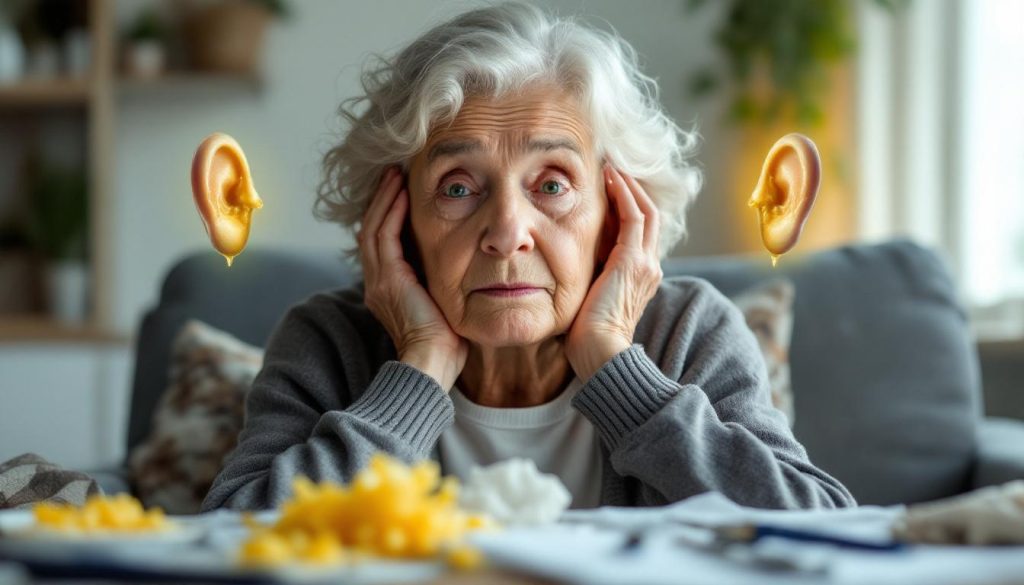For three years, Audrey Houghton’s life diminished sharply—not from physical illness or mental health conditions, but because of a stubborn build-up of earwax. Once able to manage her earwax with routine twice-yearly syringing visits at her GP’s surgery, Audrey experienced a significant change in 2022 when her doctor ceased offering this service, part of a wider trend impacting many across the country.
Audrey, now 70 and residing in Biggleswade, Bedfordshire, tried to manage the problem herself by softening the wax with olive oil and various sprays, as recommended by the NHS. Yet, these home remedies failed to effectively clear the blockage. The resulting excessive earwax impaired her hearing so severely that she withdrew from activities that once brought her joy, including keep fit classes, volunteering, socialising, and church attendance. She found everyday tasks such as shopping increasingly stressful because she struggled to hear. This isolation was compounded by repeated ear infections requiring multiple courses of antibiotics, negatively affecting both her mental and physical health.
Audrey’s experience is far from unique. The Royal National Institute for Deaf People (RNID) warns that millions of people may be suffering similar consequences because they lack access to professional earwax removal services on the NHS. Their recent survey of 2,750 respondents found that one in 20 had resorted to risky DIY methods such as tweezers or hairpins to try to clear earwax, risking permanent damage to the ear canal. Alarmingly, over one in ten had missed work due to hearing difficulties or ear pain.
The RNID has launched a campaign, Stop the Block, advocating for the reinstatement of earwax removal on the NHS for all who need it. Earwax is a natural, protective substance that usually expels itself from the ear, but can become trapped, particularly in those with narrow ear canals or who wear hearing aids. It is estimated that around 2.3 million people in England alone require professional earwax removal, yet access to these services has become inconsistent. Provision now depends heavily on local Integrated Care Boards that decide which services are funded.
Currently, guidelines from the National Institute for Health and Care Excellence (NICE) recommend treatment options such as ear irrigation with controlled water pressure or microsuction, which uses a miniature vacuum to clear the wax. The older practice of syringing with water is no longer advised due to difficulty in controlling water pressure and associated risks. However, NHS online advice often incorrectly suggests that ear drops alone will resolve symptomatic wax build-up, a stance RNID describes as misleading, as many people require professional removal.
Earwax removal procedures on the private market can cost up to £100 per session, with about 10% of patients needing treatment up to three times a year. For many, this is prohibitively expensive, effectively leaving them without viable options. Audrey herself paid for private removal in a High Street clinic, which proved distressingly painful and left her with a ringing noise in her ears for hours afterward. She later received a safe, painless microsuction procedure through her NHS audiology department, which restored her hearing and allowed her to resume normal activities.
The RNID stresses that earwax removal carries risks such as injury to the ear canal or eardrum, so it should always be performed by trained professionals including audiologists, nurses, or doctors. This caution underscores the dangers of attempts at self-removal and the importance of accessible, safe NHS services.
Official NHS guidance generally advises against using fingers, cotton buds, or other objects to remove earwax, as these can push wax deeper and worsen the problem. The NHS recommends using ear drops to soften wax, allowing it to naturally fall out over around two weeks. If symptoms such as hearing loss, earache, tinnitus, or dizziness persist, patients should consult pharmacists or GPs for further assessment. Where necessary, primary care or community services can provide irrigation or microsuction treatments.
While earwax may seem a minor issue, its impact on individuals’ quality of life can be profound, causing both social isolation and physical discomfort. Audrey’s case vividly illustrates why earwax removal must remain an integral part of NHS care, accessible to all who need it, to prevent unnecessary suffering and ensure well-being.
📌 Reference Map:
- Paragraph 1 – [1]
- Paragraph 2 – [1]
- Paragraph 3 – [1]
- Paragraph 4 – [1]
- Paragraph 5 – [1]
- Paragraph 6 – [1]
- Paragraph 7 – [1]
- Paragraph 8 – [1], [2], [3], [6]
- Paragraph 9 – [1], [7]
- Paragraph 10 – [1], [7]
- Paragraph 11 – [2], [3], [4], [5], [6]
Source: Noah Wire Services





